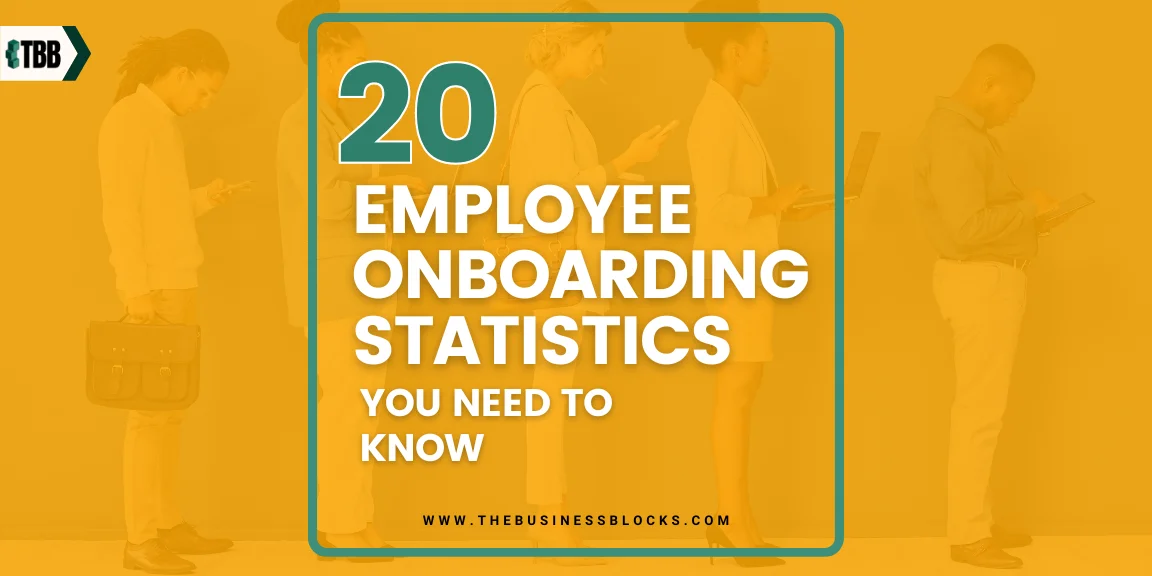It’s no secret that a good onboarding experience is key to retaining employees. Onboarding statistics reveal that a good onboarding experienhttps://thebusinessblocks.com/tips-for-running-a-successful-business/
ce allows you to work with an employee who is committed and engaged with the company.
Unfortunately, many companies still don’t put enough emphasis on onboarding, and as a result, they’re losing out on the benefits of having a good onboarding program.
If you’re looking to improve your company’s retention rates, look at these eye-opening onboarding statistics to help you understand the experiences of employers and employees during onboarding.
STATISTICS ABOUT EMPLOYEE ONBOARDING MISTAKES

- 88% of organizations don’t have an efficient onboarding program. (Sapling HR)
- Only 45% of businesses measure the effectiveness of their onboarding programs. (Finances Online)
- One-third of the 1,000 survey respondents said they had quit a job within six months of starting it. (Zippia)
- Despite known flaws, 10% of companies have not done anything to improve their employee onboarding process in recent years. (Finances Online)
- After starting their new job, 43% of employees are without essential job equipment for more than a week. (Talentech)
- 50% of new employees who failed to meet their performance goals had no formal onboarding process. (SHRM)
STATISTICS ABOUT SUCCESSFUL EMPLOYEE ONBOARDING PROGRAM

- Most organizations that invested in onboarding saw revenue increases last fiscal year, with 78% reporting such growth. (Zippia)
- 92% of recruits feel productive and valued within their first month on the job due to effective onboarding practices. (RecogNation)
- Organizations that provide formal onboarding training are less likely to lose over 60% of their workforce within four years. (TMF Group)
- Employees who engage in extensive onboarding programs achieve full competence 34 times faster than their colleagues who do not partake in such programs. (Activity)
- The best employee onboarding programs extend throughout the first 90 days to ensure that new hires are fully supported. These programs may extend to one year to assist new employees in adjusting to their new roles. (LinkedIn)
STATISTICS ABOUT EMPLOYEE ONBOARDING RETENTION

- Organizations with an excellent onboarding process see a 52% increase in new hire retention rates. (Clear Company)
- A positive employee onboarding experience is essential for retention, with 82% of employees remaining at a company after a positive experience. (Sapling HR)
- The first 45 days of employment are crucial for new employees, with up to 20% of worker turnover happening within this period. (SHRM)
- As many as 37% of employers cite a lack of work-life balance as one of the primary reasons employees leave their company. Accordingly, new hires should receive proper onboarding concerning healthy work practices to help promote retention. (The Manifest)
- Employees participating in a structured onboarding program are 69% more likely to remain with an organization for three years or longer. (Click Boarding)
STATISTICS ABOUT EMPLOYEE ONBOARDING AUTOMATION

- Investing in automation for onboarding tasks can result in an 18% improvement in initial performance for new employees. (UserGuiding)
- Lack of technology caused 36% of HR professionals to have difficulty automating and organizing their onboarding process. (UserGuiding)
- Onboarding automation has led to an average 16% lower employee turnover rate. (UrbanBound)
- By automating their document management, companies can save an average of $20 per paper on filing, $120 spent on looking for lost documents, and $220 spent on recreating lost documents. Additionally, document automation is better for the environment. (eFileCabinet)
CONCLUSION
When it comes to employee onboarding, organizations must create an experience that will boost productivity, engagement, retention, and revenue. Creating an effective onboarding program takes careful planning and execution.
A few key elements are essential for any great onboarding program. An effective onboarding program’s most important elements include a clear and concise onboarding plan, a dedicated onboarding team, a focus on the first 90 days, culture, and tools and development.
By onboarding new employees properly, companies can see a return on their investment through a more engaged and productive workforce.

